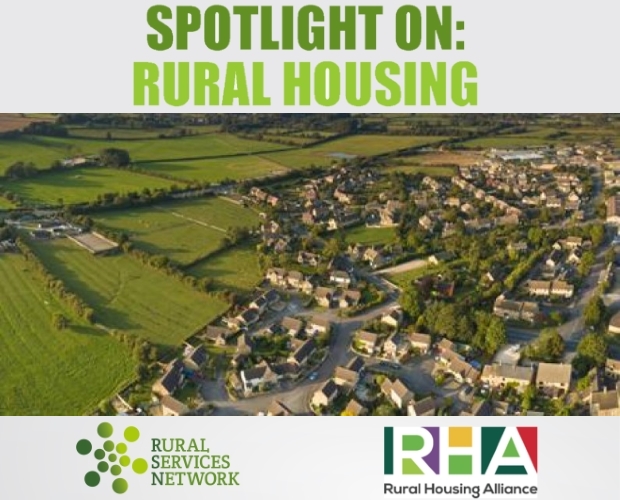T: 01822 851370 E: admin@sparse.gov.uk
RSN demands fairer funding for rural areas
 PRESS RELEASE
PRESS RELEASE
For immediate release
Thursday, 30 November 2017
Rural Services Network demands fairer funding for rural communities
The Rural Services Network [1] is calling on the government to ensure that rural communities receive fairer funding for vital public services.
It comes as the government prepares to announce its local government settlement for 2018-19 – its annual determination of funding for local authorities in England [2].
Central government has historically and systematically underfunded rural areas, giving them less grant per head than urban areas – despite the higher cost of providing services in sparsely populated rural areas.
Urban areas received some 45% (£116) per head in Government Funded Spending Power more than their rural counterparts in 2017-18, says the Rural Services Network.
The network has actively campaigned over very many years in raising the issue of unfair funding for rural local authorities and the communities they serve.
The disparity in funding is set to increase to 55% in 2019-20 taking figures from last year's local government finance settlement for 2017-18 [3].
Rural residents earn less on average than those in urban areas and pay more Council Tax for fewer local government services, says the Rural Services Network [4].
Rural Services Network chief executive Graham Biggs said: “Rural residents pay more, receive fewer services and, on average, earn less than those in urban areas and that is inequitable.
“We demand fairer funding for all public services serving rural areas.”
Cutbacks in government funding over recent years have had a bigger impact in rural areas than in other areas as their services start from a thinner base, says the Rural Services Network.
Mr Biggs said: “In times of reducing public expenditure it is more, rather than less, important to distribute available resources between different areas fairly.”
He added: “Rural communities need a fair deal – not only to maintain public services but to maintain their social and economic viability too.”
Rural areas are among the worst performing when it comes to social mobility, according to the latest “state of the nation” report by the Social Mobility Commission [5].
Only 1 in 10 predominantly rural local authority areas are in the top 65 “hotspots” with the highest social mobility – compared with one in four predominantly urban local authority areas, it says.
Like the Rural Services Network, the commission has also called on the government to increase spending on parts of the country that most need it.
Media contact:
Graham Biggs MBE
RSN chief executive
T: 01588 674 922
M: 07966 790197
E: graham.biggs@sparse.gov.uk
W: www.rsnonline.org.uk
Editor's notes:
1) The Rural Services Network is the only non-governmental organisation representing the interests of rural service providers and the communities that they serve. It involves currently some 154 Local Authorities and over 100 other service providers.
It comprises SPARSE Rural, the Rural Assembly, the wider Rural Services Partnership and the RSN Community Group. The organisation works with Rural England, a stand-alone CIC research group. For details, visit www.rsnonline.org.uk.
2) The provisional local government finance settlement for England (2018-19) is due to be announce by the Department for Communities and Local Government in December 2017.
3) The final local government finance settlement: England, 2017-2018 was published on 20 February 2017. It is available at https://www.gov.uk/government/collections/final-local-government-finance-settlement-england-2017-to-2018
4) Rural residents pay in 2017-18 17% (£86.99) per head more in council tax than their urban counterparts due to receiving less government grant. The multiyear settlement for 2017-18 showed this gap remaining unchanged until at least 2019-20.
Adult social care as a percentage of local authority total service expenditure is higher in Predominantly Rural areas, standing at 23% in 2016-17 (18% for Predominantly Urban).
Public Health Allocations to local authorities in 2017-18 were 56.1% greater per head in urban areas than rural. Police grant funding per head in 2017-18 was 41.1% greater for urban areas than rural.
Fire authority funding per head in 2017-18 was 32.4% greater for urban areas than rural. This disparity is forecast to increase to 36.4% by 2019-20.
5) Published on Tuesday (28 November), the Social Mobility Commission's "Social mobility in Great Britain: fifth state of the nation" report, can be downloaded at https://www.gov.uk/government/publications/state-of-the-nation-2017.
Our Key Messages:
Public Sector Funding
Central Government has historically and systematically underfunded rural areas giving them less grant per head than urban areas – despite the fact that it costs more to provide the services. Rural residents earn less on average than those in urban areas and therefore pay more Council Tax for fewer local government services. Government policy, implicitly, is that council services in rural areas are more reliant on funding through council tax than their urban counterparts. We demand fairer funding for all public services serving rural areas.
Barriers to Access
Rural residents and businesses face multiple barriers in terms of access to key services, including transport and broadband. Yet councils providing services to rural residents receive less money from government, pay disproportionately more for fewer services and typically earn less than people in urban areas. As a result rural residents suffer multiple disadvantages.
Future of Rural Areas
Rural communities contribute a great deal to the national economy but are facing threats to their future. This is due to a combination of chronic underfunding, demographic challenges, diminishing resources, with the needs of rural areas being systematically overlooked. Without action conditions in rural areas will deteriorate further. It is in the national interest that we all work together to revitalise this fundamental national asset.
Health and Wellbeing
Despite its idyllic image, rural communities often experience difficulties in accessing health and support services. This is becoming increasingly difficult as specialist services are centralised to remain resilient and poor transport links reduce access. There are recruitment and retention issues amongst medical staff in rural areas. Rural residents are therefore vulnerable to isolation and poorer health outcomes in the long term.
YOU MAY ALSO BE INTERESTED IN
SIGN UP TO OUR NEWSLETTER
Sign up to our newsletter to receive all the latest news and updates.









